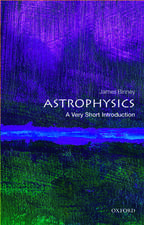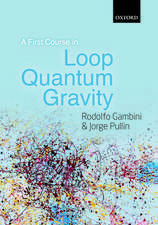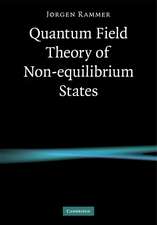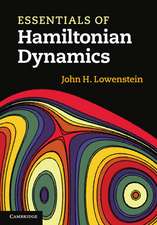Jacobi Dynamics: Many-Body Problem in Integral Characteristics: Astrophysics and Space Science Library, cartea 130
Autor V.I. Ferronsky, S.A. Denisik, S.V. Ferronskyen Limba Engleză Hardback – 31 dec 1986
| Toate formatele și edițiile | Preț | Express |
|---|---|---|
| Paperback (2) | 1110.09 lei 43-57 zile | |
| SPRINGER NETHERLANDS – 29 mai 2013 | 1110.09 lei 43-57 zile | |
| SPRINGER NETHERLANDS – 27 sep 2011 | 1221.07 lei 43-57 zile | |
| Hardback (2) | 1116.26 lei 43-57 zile | |
| SPRINGER NETHERLANDS – 11 apr 2011 | 1116.26 lei 43-57 zile | |
| SPRINGER NETHERLANDS – 31 dec 1986 | 1228.62 lei 43-57 zile |
Din seria Astrophysics and Space Science Library
- 24%
 Preț: 799.08 lei
Preț: 799.08 lei - 15%
 Preț: 647.92 lei
Preț: 647.92 lei - 18%
 Preț: 983.81 lei
Preț: 983.81 lei - 18%
 Preț: 790.28 lei
Preț: 790.28 lei -
 Preț: 359.85 lei
Preț: 359.85 lei -
 Preț: 389.70 lei
Preț: 389.70 lei - 20%
 Preț: 691.13 lei
Preț: 691.13 lei - 20%
 Preț: 816.17 lei
Preț: 816.17 lei - 18%
 Preț: 1011.27 lei
Preț: 1011.27 lei -
 Preț: 402.56 lei
Preț: 402.56 lei - 15%
 Preț: 664.93 lei
Preț: 664.93 lei -
 Preț: 398.15 lei
Preț: 398.15 lei - 18%
 Preț: 954.77 lei
Preț: 954.77 lei -
 Preț: 411.04 lei
Preț: 411.04 lei - 18%
 Preț: 1225.31 lei
Preț: 1225.31 lei - 18%
 Preț: 1843.29 lei
Preț: 1843.29 lei -
 Preț: 393.13 lei
Preț: 393.13 lei -
 Preț: 400.26 lei
Preț: 400.26 lei - 18%
 Preț: 953.82 lei
Preț: 953.82 lei - 18%
 Preț: 960.61 lei
Preț: 960.61 lei -
 Preț: 398.35 lei
Preț: 398.35 lei -
 Preț: 390.84 lei
Preț: 390.84 lei -
 Preț: 413.76 lei
Preț: 413.76 lei -
 Preț: 416.64 lei
Preț: 416.64 lei - 18%
 Preț: 947.67 lei
Preț: 947.67 lei -
 Preț: 404.51 lei
Preț: 404.51 lei - 18%
 Preț: 956.50 lei
Preț: 956.50 lei -
 Preț: 403.75 lei
Preț: 403.75 lei - 18%
 Preț: 1229.40 lei
Preț: 1229.40 lei - 18%
 Preț: 1224.99 lei
Preț: 1224.99 lei -
 Preț: 404.29 lei
Preț: 404.29 lei - 15%
 Preț: 654.77 lei
Preț: 654.77 lei - 18%
 Preț: 1248.20 lei
Preț: 1248.20 lei - 18%
 Preț: 955.25 lei
Preț: 955.25 lei - 18%
 Preț: 1846.28 lei
Preț: 1846.28 lei - 18%
 Preț: 1233.06 lei
Preț: 1233.06 lei - 18%
 Preț: 1234.77 lei
Preț: 1234.77 lei
Preț: 1228.62 lei
Preț vechi: 1498.31 lei
-18% Nou
Puncte Express: 1843
Preț estimativ în valută:
235.09€ • 246.12$ • 194.53£
235.09€ • 246.12$ • 194.53£
Carte tipărită la comandă
Livrare economică 07-21 aprilie
Preluare comenzi: 021 569.72.76
Specificații
ISBN-13: 9789027724182
ISBN-10: 9027724180
Pagini: 388
Ilustrații: XI, 371 p.
Dimensiuni: 155 x 235 x 26 mm
Greutate: 0.76 kg
Ediția:1987
Editura: SPRINGER NETHERLANDS
Colecția Springer
Seria Astrophysics and Space Science Library
Locul publicării:Dordrecht, Netherlands
ISBN-10: 9027724180
Pagini: 388
Ilustrații: XI, 371 p.
Dimensiuni: 155 x 235 x 26 mm
Greutate: 0.76 kg
Ediția:1987
Editura: SPRINGER NETHERLANDS
Colecția Springer
Seria Astrophysics and Space Science Library
Locul publicării:Dordrecht, Netherlands
Public țintă
ResearchCuprins
1. Introduction.- Principle of mutual reversibility.- Action and integral canonical pairs.- Integral characteristics in the study of dynamics of natural systems.- Method of moments: specific features in the integral approach and first moments.- 2. Universality of Jacobi’s Virial Equation for Description of Dynamics of Natural Systems in Terms of Integral Characteristics.- Derivation of Jacobi’s virial equation from Newtonian equations of motion.- Derivation of generalized Jacobi’s virial equation for dissipative systems.- Derivation of Jacobi’s virial equation from Eulerian equations.- Derivation of Jacobi’s virial equation from Hamiltonian equations.- General covariant form of Jacobi’s virial equation.- Relativistic analogue of Jacobi’s virial equation.- Derivation of Jacobi’s virial equation in quantum mechanics.- 3. Solution of Jacobi’s Virial Equation for Conservative Systems.- Solution of Jacobi’s virial equation in classical mechanics.- Solution of Jacobi’s virial equation in hydrodynamics.- Equivalence of the Schwarzschild solution and solution of Jacobi’s virial equation (static description).- The hydrogen atom as quantum mechanical analogue of the two-body problem.- 4. Perturbed Virial Oscillations of a System.- Analytical solution of generalized equation of virial oscillations.- Solution of Jacobi’s virial equation for a dissipative system.- Solution of Jacobi’s virial equation for a system with friction.- 5. Relationship Between Jacobi Function and Potential Energy.- Asymptotic limit of simultaneous collision of mass points for a conservative system.- Asymptotic limit of simultaneous collision of mass points for non-conservative systems.- Asymptotic limit of simultaneous collision of charged particles of a system.- Relationshipbetween Jacobi function and potential energy for a system with high symmetry..- 6. Applications in Celestial Mechanics and Stellar Dynamics.- Solution of Jacobi’s virial equation for Trapezium Orion type systems.- Damping virial oscillations.- Application to the problem of the Moon’s motion.- Lyapunov stability of motion.- 7. Applications in Astrophysics, Cosmogony and Cosmology.- Velocity of gravitational contraction of a gaseous sphere.- Bifurcation of a dissipative system.- Electromagnetic energy radiation by a celestial body as an electric dipole.- Cosmo-chemical effects.- Direct derivation of the equation of virial oscillations from Einstein’s equation.- 8. Global Dynamics of the Earth.- Problems of global dynamics in geophysics.- Unperturbed virial oscillations of the Earth.- Solution of Jacobi’s virial equation for the Earth’s atmosphere.- Perturbed oscillations of the Earth’s atmosphere.- Identification of resonance frequencies.- Observation of the virial eigenoscillations of the Earth’s atmosphere.- Conclusion.- References.
Recenzii
`It is stimulating and resourceful reading for the astronomer, geophycist, or for any physically oriented scientists who sees his research subject placed within the framework of global natural systems.'
Space Science Reviews, Vol. 47, No. 204, 1988.
Space Science Reviews, Vol. 47, No. 204, 1988.
Textul de pe ultima copertă
In their approach to Earth dynamics the authors consider the fundamentals of Jacobi Dynamics (1987, Reidel) for two reasons. First, because satellite observations have proved that the Earth does not stay in hydrostatic equilibrium, which is the physical basis of today’s treatment of geodynamics. And secondly, because satellite data have revealed a relationship between gravitational moments and the potential of the Earth’s outer force field (potential energy), which is the basis of Jacobi Dynamics. This has also enabled the authors to come back to the derivation of the classical virial theorem and, after introducing the volumetric forces and moments, to obtain a generalized virial theorem in the form of Jacobi’s equation. Thus a physical explanation and rigorous solution was found for the famous Jacobi’s equation, where the measure of the matter interaction is the energy.
The main dynamical effects which become understandable by that solution can be summarized as follows:
• the kinetic energy of oscillation of the interacting particles which explains the physical meaning and nature of the gravitation forces;
• separation of the shell’s rotation of a self-gravitating body with respect to the mass density;
difference in angular velocities of the shell rotation;
• continuity in changing the potential of the outer gravitational force field together with changes in density distribution of the interacting masses (volumetric center of masses);
• the nature of the precession of the Earth, the Moon and satellites; the nature of the rotating body’s magnetic field and the generation of the planet’s electromagnetic field.
As a final result, the creation of the bodies in the Solar System having different orbits was discussed. This result is based on the discovery that all the averaged orbital velocities of the bodies in the Solar System and the Sun itself are equalto the first cosmic velocities of their proto-parents during the evolution of their redistributed mass density.
Audience
The work is a logical continuation of the book Jacobi Dynamics and is intended for researchers, teachers and students engaged in theoretical and experimental research in various branches of astronomy (astrophysics, celestial mechanics and stellar dynamics and radiophysics), geophysics (physics and dynamics of the Earth’s body, atmosphere and oceans), planetology and cosmogony, and for students of celestial, statistical, quantum and relativistic mechanics and hydrodynamics.
The main dynamical effects which become understandable by that solution can be summarized as follows:
• the kinetic energy of oscillation of the interacting particles which explains the physical meaning and nature of the gravitation forces;
• separation of the shell’s rotation of a self-gravitating body with respect to the mass density;
difference in angular velocities of the shell rotation;
• continuity in changing the potential of the outer gravitational force field together with changes in density distribution of the interacting masses (volumetric center of masses);
• the nature of the precession of the Earth, the Moon and satellites; the nature of the rotating body’s magnetic field and the generation of the planet’s electromagnetic field.
As a final result, the creation of the bodies in the Solar System having different orbits was discussed. This result is based on the discovery that all the averaged orbital velocities of the bodies in the Solar System and the Sun itself are equalto the first cosmic velocities of their proto-parents during the evolution of their redistributed mass density.
Audience
The work is a logical continuation of the book Jacobi Dynamics and is intended for researchers, teachers and students engaged in theoretical and experimental research in various branches of astronomy (astrophysics, celestial mechanics and stellar dynamics and radiophysics), geophysics (physics and dynamics of the Earth’s body, atmosphere and oceans), planetology and cosmogony, and for students of celestial, statistical, quantum and relativistic mechanics and hydrodynamics.
Caracteristici
A theoretical treatise on a unified theory with applications to the dynamics of the Earth, Moon, planets and satellites, the Sun and the stars Builds up fundamentals of real dynamics of the Earth Written by experts in the field Includes supplementary material: sn.pub/extras

















